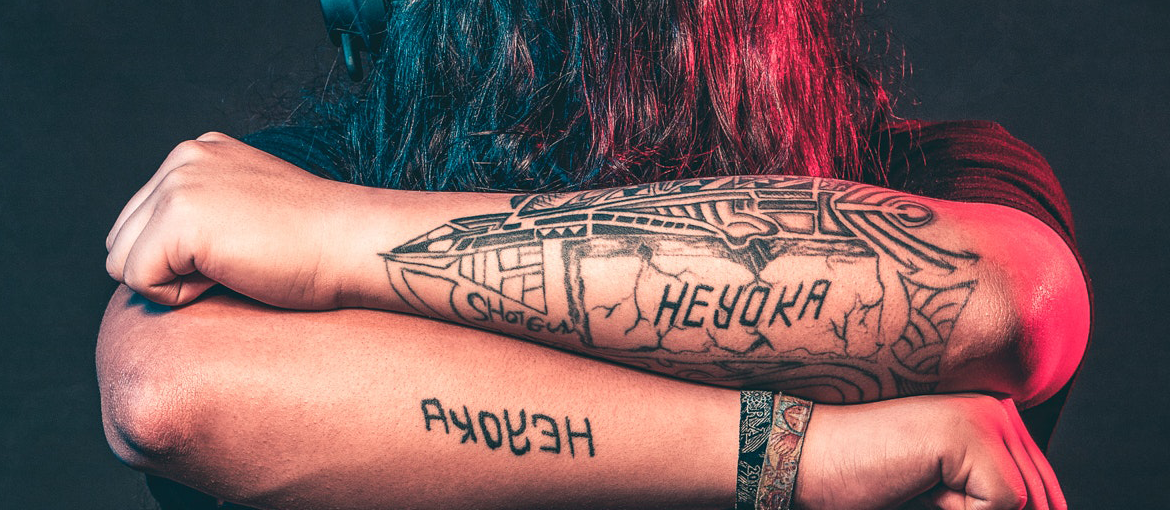At just 26 years old, Emerson Ventura has already spent nine years as a tattoo artist. A single visit to a tattoo parlor in his homeland of Brazil was all it took for him to realize his calling, his true way of life. With a background in graffiti art, he started to sketch obsessively until, at 17, he inked the word “vegan” on a friend willing to be his first canvas. “My hands were trembling,” he remembers.

Emerson is now a tattoo artist at the esteemed Family Art Tattoo in Barcelona, where he specializes in creating stunning tattoos inspired by Tibetan art. Getting inked is far from a casual decision: for those who undergo the needle, the symbols, patterns, and words etched into their skin serve as perpetual reminders of loved ones, or significant moments in their lives.
When it comes to script, it’s not just the wording or message that counts but the attention to the beauty of the lettering. From Oriental to Gothic, Arabic to calligraphy, geometric patterns to embellishments, and even Roman numerals, the reality is that the form, weight, size, and hue are critical factors to consider before getting inked, as they can elevate your skin to a piece of art.

The web offers endless inspiration for tattoo fonts. Websites like Dafont or Conversordeletras provide a plethora of font options sorted by category. Here, one can input their desired text and preview it in various sizes, offering a glimpse of the final design. These resources are complimentary, yet for those inclined to support the creators, sites like MyFont offer fonts at affordable rates, and 1001 Free Fonts accepts donations. Another option is to engage a professional tattoo lettering artist, though any script or calligraphy that adheres to aesthetic principles is suitable.

Arriving at a tattoo shop with a chosen font is just the beginning; the tattoo artist’s expertise is invaluable in refining the choice. “I usually suggest my lettering because I’m passionate about calligraphy, but some clients have specific fonts in mind. Whether they want a typewriter font or a relative’s handwriting replicated, I aim for aesthetic coherence,” says Emerson. His go-to style is classic cursive, currently the most popular request. Emerson advises a minimum font size to prevent the tattoo from blurring into an indistinct mark over time. And he warns against the unforgivable error of spelling mistakes, which could mar the body indefinitely.

After settling on the font and body placement, the design is printed, digitally refined, and then transferred onto the skin using ink and pigments. Despite technological advancements that offer more precision in tools and higher quality materials, tattooing by hand on the skin—a “canvas” that demands utmost skill—remains challenging. “Juggling multiple aspects at once is complex. It’s akin to learning to drive: initially stressful, it eventually becomes second nature,” the tattoo artist from Brazil shares.
Whether routine or not, the outcome never fails to impress and celebrate the talent of tattoo artists who immortalize words and messages as enduring masterpieces on the skin.

